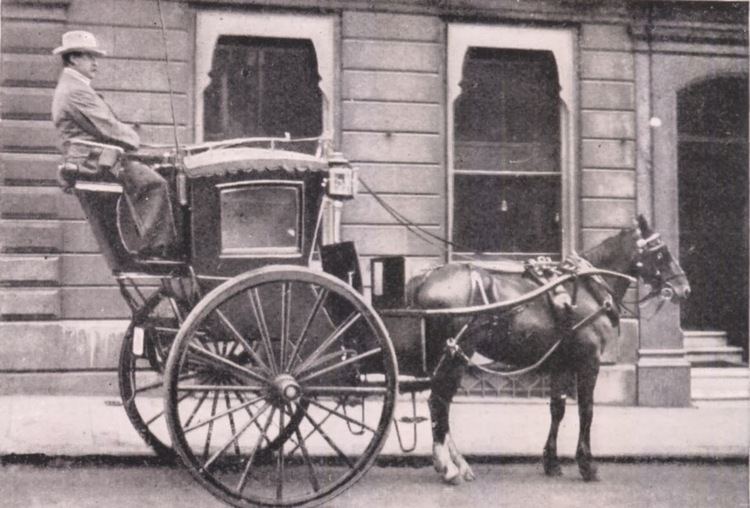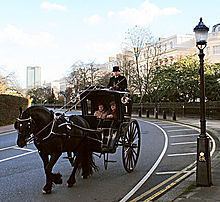 | ||
York museums trust genesis podcast project hansom cab
The hansom cab is a kind of horse-drawn carriage designed and patented in 1834 by Joseph Hansom, an architect from York. The vehicle was developed and tested by Hansom in Hinckley, Leicestershire, England. Originally called the Hansom safety cab, it was designed to combine speed with safety, with a low centre of gravity for safe cornering. Hansom's original design was modified by John Chapman and several others to improve its practicability, but retained Hansom's name.
Contents
- York museums trust genesis podcast project hansom cab
- The mystery of a hansom cab full audiobook
- Design
- Hansom Cab Company
- In popular culture
- References
Cab is a shortening of cabriolet, reflecting the design of the carriage. It replaced the hackney carriage as a vehicle for hire; with the introduction of clockwork mechanical taximeters to measure fares, the name became taxicab.

Hansom cabs enjoyed immense popularity as they were fast, light enough to be pulled by a single horse (making the journey cheaper than travelling in a larger four-wheel coach) and were agile enough to steer around horse-drawn vehicles in the notorious traffic jams of nineteenth-century London. There were up to 7500 hansom cabs in use at the height of their popularity and they quickly spread to other cities (such as Dublin) in the United Kingdom, as well as continental European cities, particularly Paris, Berlin, and St Petersburg. The cab was introduced to other British Empire cities and to the United States during the late 19th century, being most commonly used in New York City.

The mystery of a hansom cab full audiobook
Design

The cab, a type of fly, sat two passengers (three if squeezed in) and a driver who sat on a sprung seat behind the vehicle. The passengers were able to give their instructions to the driver through a trap door near the rear of the roof. They could also pay the driver through this hatch and he would then operate a lever to release the doors so they could alight. In some cabs, the driver could also operate a device that balanced the cab and reduced strain on the horse. The passengers were protected from the elements by the cab itself, as well as by folding wooden doors that enclosed their feet and legs, protecting their clothes from splashing mud. Later versions also had an up-and-over glass window above the doors to complete the enclosure of the passengers. Additionally, a curved fender mounted forward of the doors protected passengers from the stones thrown up by the flying hooves of the horse.
Hansom Cab Company

The Hansom Cab Company was set up to provide transportation in New York City and Brooklyn, New York, in May 1869. The business was located at 133 Water Street (Manhattan), at the offices of Duncan, Sherman & Co., which served as bankers to the firm. The enterprise was organized by Ed W. Brandon who became its president. Two orders for a cargo of cabs were sent to carriage makers in New York City. A fare of thirty cents for a single person was designated for distances up to one mile, and forty cents for two people. A rate of seventy-five cents was determined for one or two persons for a length of time not exceeding one hour.
The cabs were widely used in the United Kingdom until 1908 when Taximeter Cars (petrol cabs) started to be introduced and were rapidly accepted; by the early 1920s horse-drawn cabs had largely been superseded by motor vehicles. The last licence for a horse-drawn cab in London was relinquished in 1947.
A restored hansom cab once owned by Alfred Gwynne Vanderbilt is on display at the Remington Carriage Museum in Cardston, Alberta, Canada. There is another surviving example, owned and operated by the Sherlock Holmes Museum in London; in common with other horse-drawn vehicles it is not permitted to enter any of the Royal Parks.
